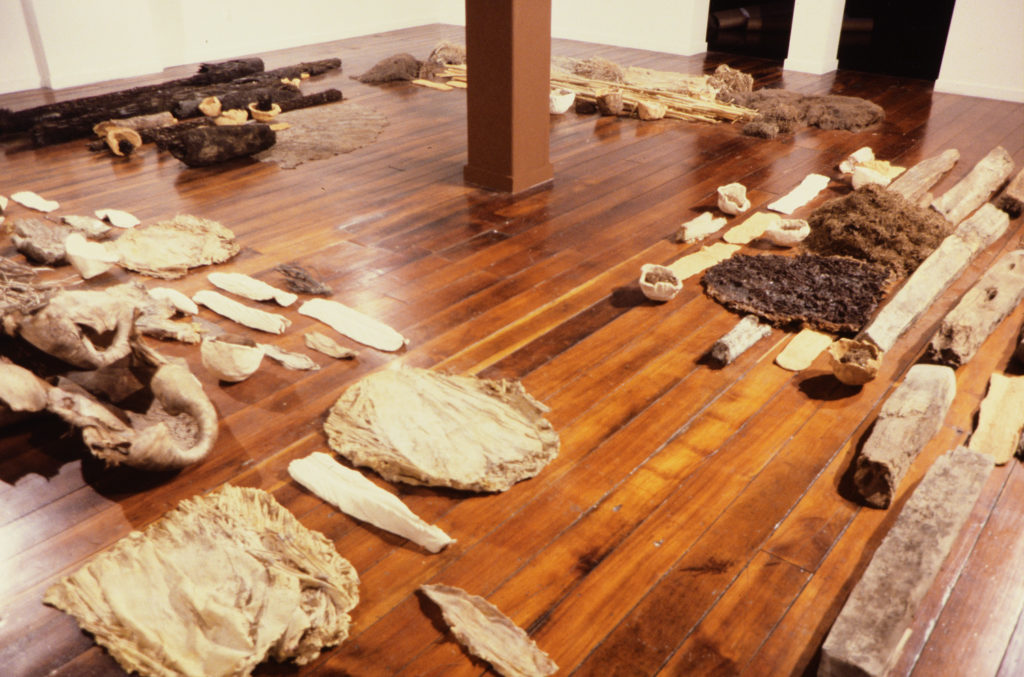Christine Hellyar’s work reconfigures our interactions with the natural environment. For Nest and Post, the Auckland sculptor arranges more-or-less natural materials on the gallery floor in a square formation. They include blackened trunks, fence posts, stones, fronds, moss, and fruit; plus casts of leaves, clay nests, and latex moulds of the forest floor. Each of the four sides refers to a particular native plant—ponga, nīkau, tōtara, and toetoe. In an accompanying video interview, Hellyar identifies the post/trunk elements as male and the nest/fruit elements as female. The room’s column, painted black, stands totem-like in the centre.
Hellyar plays on the way we classify things: wild/domestic, nature/culture, male/female. But her installation is not didactic. It is made for ‘meandering and fossicking’. Hellyar wants to encourage ‘a sense of discovery’ where we ‘walk around and look much in the same ways as in the bush’. In the Evening Post, Ian Wedde writes: ‘You can read the work as display, as ecological cross-section, as artistic niche, as a language of observation … It exhorts us to pay real attention. It says that the world can benefit from what art facilitates.’















